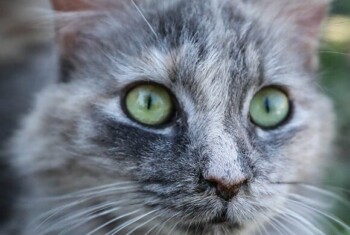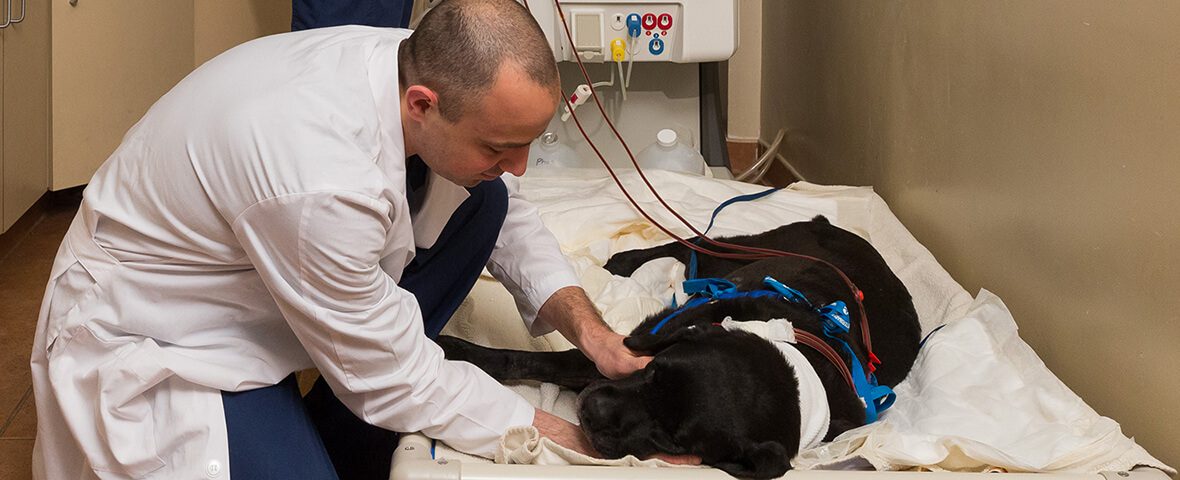What is Malassezia?
Malassezia is a common type of yeast found on the skin and ears of dogs and cats. This yeast is part of the normal flora of an animal’s skin and is actually protective when present in normal amounts. However, inflammation of the skin or ears allows the yeast to overgrow and overpopulate, often leading to dermatitis (inflammation of the skin).
Some pets can develop an allergy or hypersensitivity to Malassezia itself. At low or normal amounts, the yeast doesn’t usually affect a patient, but if it overpopulates, the pet becomes very itchy. Malassezia overgrowth is treatable, although relapses are common if the underlying cause isn’t addressed.
Clinical signs and symptoms of Malassezia dermatitis
Malassezia dermatitis can present in many different ways on the skin and ears. Common clinical signs include:
- Itching (ranging from mild to severe)
- Red or inflamed skin and ears
- Skin rashes
- Hair loss
- Dandruff or greasy-looking skin
- Discolored brown nails
- Thickened “elephant” skin
- Distinct odor (it’s a common myth that pets smell like corn chips as bacteria can smell the same way)
Causes
Any condition that causes skin inflammation can allow for an overgrowth of Malassezia. The most common cause seen in dermatology is underlying allergies.
Some of the common causes include:
- Allergies (environmental/atopic dermatitis, food, flea, insect bites, contact dermatitis, etc.)
- Metabolic issues, including hypothyroidism and Cushing’s disease (hyperadrenocorticism)
- Autoimmune or immune-mediated conditions
- Immunosuppression, such as underlying diseases, cancer, drugs, etc.
Getting a diagnosis
Luckily, Malassezia is often easy to find. If your pet is experiencing symptoms, your primary veterinarian or a veterinary dermatologist can do a cytology test, where a glass slide or a piece of tape is lightly pressed against the skin, stained, and examined under the microscope. This simple test can provide a bounty of information on the presence of yeast, bacteria, inflammation and more.
It’s rare, but a biopsy, culture or PCR test may also be used to diagnose Malassezia.
Questions for your doctor
When consulting with your pet’s veterinarian, consider asking questions like:
- What underlying condition could my pet have that’s allowing yeast to overgrow?
- Are topical medications enough to treat yeast overgrowth, or are oral medications also needed?
- What are the options for managing Malassezia dermatitis long term? What can be done to help prevent yeast overgrowth?
- When do I need to see my vet for cytology to diagnose a yeast infection? And when do I need to see my vet for a follow-up to confirm the infection is gone?
Treatment
There are many ways to treat Malassezia dermatitis. Treatments usually come in two forms: topical and oral antifungal medications.
Topical therapy
Topical therapy is often recommended because the concentration of the antifungal is higher, allowing for a more direct way to treat the skin and ears.
Another benefit to topical treatment is that it generally has fewer side effects and lower costs.
There are various topical antifungal medications available, and your veterinarian can discuss the options with you.
Oral antifungal medications
Your veterinarian may recommend administering oral antifungal medication, especially if the yeast is concentrated in your pet’s nail beds or is widespread on their body; it can be challenging in many pets to treat these sites with topical therapy alone.
Many of the treatments are recommended for 21-30 days, and it’s always recommended to recheck the skin with cytology after treatment to ensure the infection is completely resolved before ending medications.
In some cases, continued oral antifungal medication is recommended with a decreased “pulse dose” given a few times weekly.
Allergen-specific immunotherapy
One of the best treatments for Malassezia allergies or hypersensitivities is allergen-specific immunotherapy. This therapy treats the immune system and teaches it to respond differently to what your pet is allergic to. This can be given in two forms: injections under the skin or placed under the tongue. With this treatment, seeing a dermatologist is recommended because it requires allergy testing.
Underlying causes
The most important treatment is diagnosing and managing the underlying cause. If left unaddressed, the underlying cause will continue to allow Malassezia to relapse.
Even if the underlying cause is managed, flare-ups can (and likely will) occur. It’s important to remember that many underlying skin conditions don’t have a cure, but with dedication and perseverance, they can often be managed.
Prevention
Identifying and treating or managing the underlying cause is the best way to prevent Malassezia overgrowth. Being consistent with topical therapy is also key in preventing overgrowth of the yeast.
Topical therapy often includes frequent bathing (once to twice per week) with a medicated shampoo. In between bathing, topical antifungal mousses and lotions can be helpful.
Prognosis
If the underlying cause of inflammation is addressed and managed, the prognosis for controlling Malassezia infections is good.
If left untreated, Malassezia will continue to relapse and cause discomfort to pets.
It’s rare for Malassezia to progress and cause internal issues.


